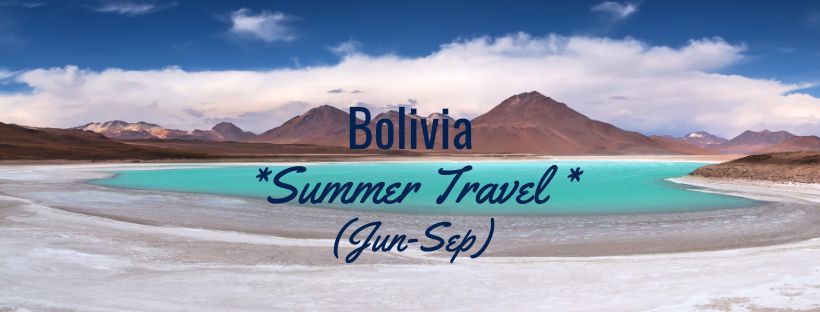
Traveling to Bolivia during Northern Hemisphere's summer season (June, July, August) can be a great idea especially if you enjoy cooler temperatures and want to explore the country's diverse landscapes. Here are 4 aspects to consider.
June to September is the winter season in Bolivia, and temperatures during this period can vary depending on the region and altitude. In general, you can expect cooler temperatures, especially in higher elevations. The days are often sunny and pleasant, while nights can be colder, particularly in areas such as the Altiplano and the highlands.
Bolivia offers a wide range of attractions, from stunning natural landscapes to vibrant cities and cultural heritage sites. Here are a few highlights:
1. Salt Flats
The famous Uyuni Salt Flats, one of Bolivia's iconic destinations, can be especially enchanting during the winter season. The dry weather allows for clear views and the opportunity to witness the salt flats' mesmerizing mirror effect after rainfall.
2. National Parks
Bolivia is home to several national parks, such as Sajama National Park and Madidi National Park, which showcase diverse ecosystems, unique flora and fauna, and breathtaking mountain scenery. Hiking and wildlife spotting opportunities abound during this time, and the cooler temperatures make for comfortable outdoor activities.
3. Cities and Cultural Sites
Exploring cities like La Paz, Sucre, and Potosi can be enjoyable during the winter season. The cooler temperatures make walking tours and sightseeing more pleasant, and you can delve into Bolivia's rich history, architecture, and cultural heritage.
4. Lake Titicaca
The world's highest navigable lake, located between Bolivia and Peru, offers captivating beauty year-round. In winter, you can experience the peacefulness of the lake, explore its islands, and engage with local communities.
While traveling during this period can be rewarding, it's important to pack accordingly, as temperatures can drop significantly, especially at higher altitudes. Layered clothing, including warm sweaters, jackets, hats, gloves, and sturdy footwear, is recommended.
It's also worth noting that June to September falls within the dry season, meaning there is generally less rainfall. However, weather patterns can vary, and it's advisable to check specific regional forecasts and road conditions, especially if you plan to travel to remote areas or undertake outdoor activities.
In summary, traveling to Bolivia between June to September offers the opportunity to experience the country's diverse landscapes and cultural heritage in cooler temperatures. From the enchanting salt flats to the majestic Andean mountains, Bolivia's natural beauty can be explored and enjoyed during this season.
Start designing the trip of your dream: get in touch with your Bolivia Travel Expert now!